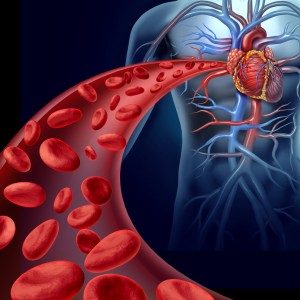 A research team led by Paolo Decuzzy at Houston Methodist Research Institute successfully used magnetic nanoparticles to destroy blood clots. The study entitled “TPA Immobilization on Iron Oxide Nanocubes and Localized Magnetic Hyperthermia Accelerate Blood Clot Lysis” was published online in Advanced Functional Materials.
A research team led by Paolo Decuzzy at Houston Methodist Research Institute successfully used magnetic nanoparticles to destroy blood clots. The study entitled “TPA Immobilization on Iron Oxide Nanocubes and Localized Magnetic Hyperthermia Accelerate Blood Clot Lysis” was published online in Advanced Functional Materials.
Thrombi are formed by fibrin strands, coagulation factors, and blood cells, including platelets and erythrocytes. If thrombi obstruct the blood flow on the arterial side, it may lead to myocardial infarction and ischemic stroke, while obstruction on the vein side can cause pulmonary embolism. In both cases, rapid reestablishment of normal blood flow is essential to reduce the damaged area and preserve organ function.
The research team developed magnetic nanoparticles that destroy blood clots 100 to 1,000 times faster than commonly used thrombolytics. Within these thrombolytics, tissue plasminogen activator (tPA) is normally used and injected into the stroke patient’s blood upstream of a confirmed or suspected clot. tPA has a very short longevity in the blood and it may cause side effects in some patients, including cerebral haemorrhages. Researchers have overcome these problems by loading tPA into albumin coated iron oxide nanoparticles.
Albumin is present in the blood and serves as a disguise for the body’s immune system whereas iron oxide enables magnetic resonance imaging and remote guidance with external magnetic fields further accelerating clot dissolution with localized magnetic heating.
“We have designed the nanoparticles so that they trap themselves at the site of the clot, which means they can quickly deliver a burst of the commonly used clot-busting drug tPA where it is most needed,” said Dr. Paolo Decuzzi in a press release.
The team tested the effectiveness of tPA-loaded nanoparticles by using human tissue cultures in mice after inducing blood clots. The rate of clot dissolution observed — 100 times more efficient than conventional treatments — could be enhanced an additional 10 times if iron oxide nanoparticles were exposed to external, alternating magnetic fields.
Overall, these nanoparticles may represent an advance in preventing heart attacks, strokes and pulmonary embolisms. Further safety and effectiveness studies are still required to achieve human clinical trials. “We are optimistic because the FDA has already approved the use of iron oxide as a contrast agent in MRIs,” Decuzzi said. “And we do not anticipate needing to use as much of the iron oxide at concentrations higher than what’s already been approved. The other chemical aspects of the nanoparticles are natural substances you already find in the bloodstream.”


